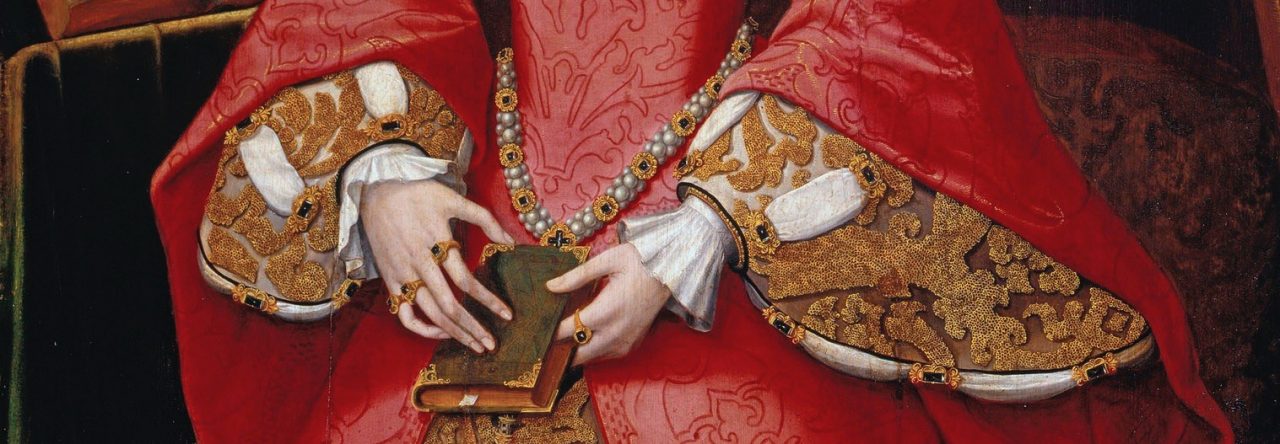As we have previously noted, the Book of Common Prayer is one of the books most likely to have been owned by a woman. As of the writing of this post, eight other examples have been featured here. A cornerstone of religious life, Books of Common Prayer were often sumptuously bound with hand-colored illustrations (see here and here) and gilt-tooled covers. Lucy Burman’s Book of Common Prayer is among them.

Her Book of Common Prayer is encased in gilt-stamped red morocco binding with black morocco inlay, silver clasps, and silver furniture. The center plate bears the initials “A B,” presumably another member of the Burnham family. Colorful Dutch gilt endpapers cap off the book’s visual appeal. The bookseller notes that style of the binding is similar to the so-called “cottage-roof binding” employed by the Restoration-era binder Samuel Mearne and may have been done by one of his apprentices.


As the bookseller observes, the binding was likely commissioned in or around 1703, that being the date of the Book of Psalms bound with the Book of Common Prayer. It is easy to find things to say about this striking binding, but less so A.B. and Lucy Burnham, who—like so many owners profiled on this blog—have been swallowed by the centuries.
Here again, the bookseller gives a lead, noting that A.B. and Lucy were likely members of the Stratford-upon-Avon Burman family, who lived in the village of Shottery, where Shakespeare’s wife Anne Hathaway resided as a child. In fact, Burman’s Farm is located directly behind the cottage and has since been renamed Hathaway Farm, the most popular tourist attraction in the area next to the cottage and Shakespeare’s Birthplace. As Katherine West Scheil notes, “connections between the Burmans and Hathaways stretch back to the fifteenth century.”
There are a few strong candidates for Lucy’s identity. The first is Lucy Walford Burnam (ca. 1660–1719) who married Stephen Burnam (1651–1709) in 1694. Their son Hugh Burnam (1696–1761) and his wife Hester Hurdis Burnam (1696–1766) of Shottery had seven children, only one of whom, Lucy (1732–1787), outlived her parents. The younger Lucy married the Reverend William Daniel of Stretton-on-Dunsmore in 1762 and “was a considerable heiress,” according to her descendant John Burman. Lucy and Stephen also had a daughter called Lucy, born in 1702 and married in 1728 to William Hurdis.
A.B. is harder to pin down. The A may stand for Ann(e) or Anna. An Anna Burman was born to a Thomas Burman in December 1639 and baptized at Stratford-Upon-Avon, while an Anne Burnam was born to Richard and Joice Burnam of Packwood sometime after 1665. Packwood was a civil parish about 15 miles north of Stratford. If she was the person whose initials are engraved on the silver furniture of the Book of Common Prayer, then she would have been in her late 30s at the time the book was bound.

Opposite Lucy Burman’s signature on the title is a religious poem, which can be viewed here. It bears similarities, though is not an identical match, to her signature, reading in full: “Faith in God that self denyes, / Wisdom with her self supplyes: / Filling the soul with th’ Eternal Good / When she wills not what she Would.” It is a poem about denying one’s own will and desires in order to obtain wisdom and Divine favor. Together, the book and the religious inscription provide interesting insight into the devotional life into a probable Stratford family in the early to mid-18th century.

Source: Book sold by WoodPaz Books Ltd on 25 February, 2024. Images used with permission.
Further Reading
Burman, John. The Burman Chronicle: The Story of a Warwickshire Family (Birmingham: Cornish Brothers, 1940), p. 28-29.
Libby Shade’s Page of Family Trees. “Burman: Sixth Generation” (https://www.shade.id.au/Burman/Burman6.htm) and “Burman: Seventh Generation” (https://www.shade.id.au/Burman/Burman7.htm). Updated May 2008.














































